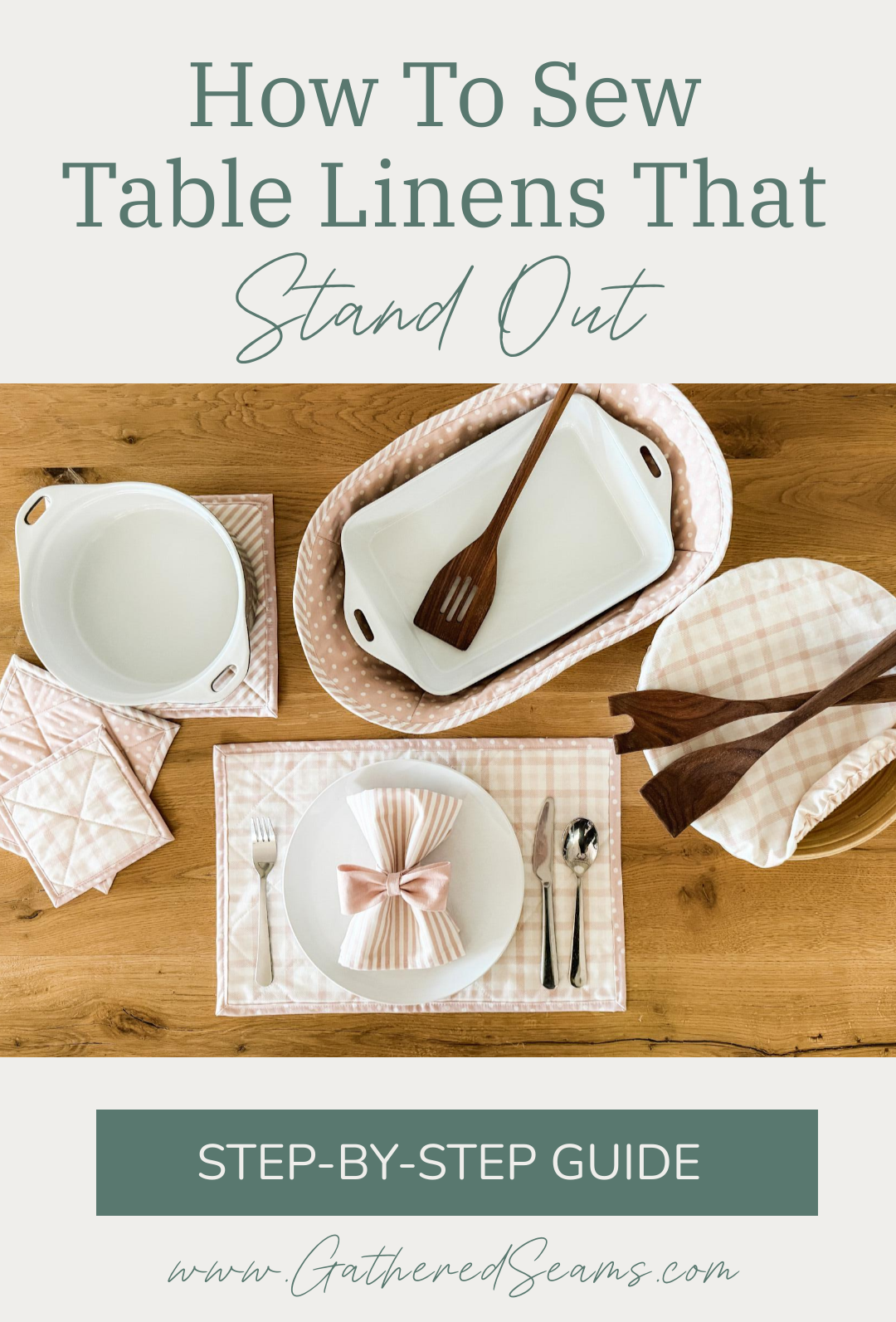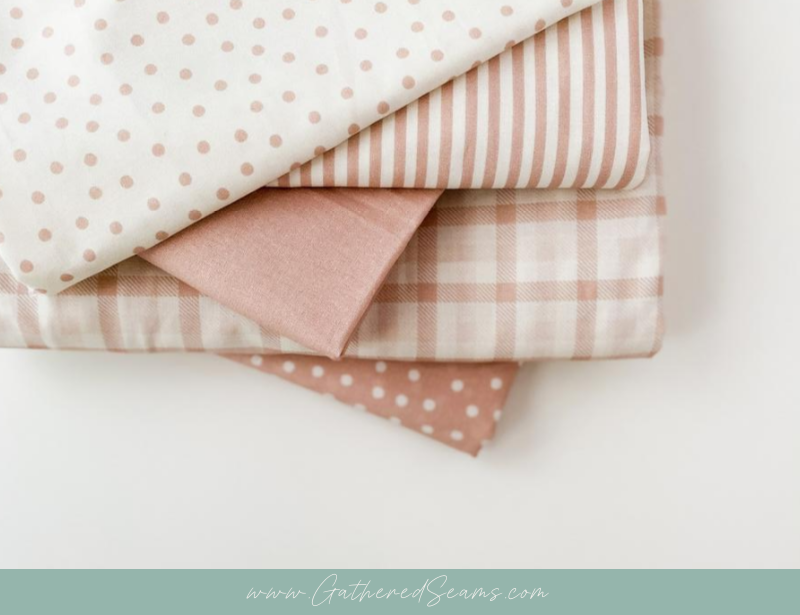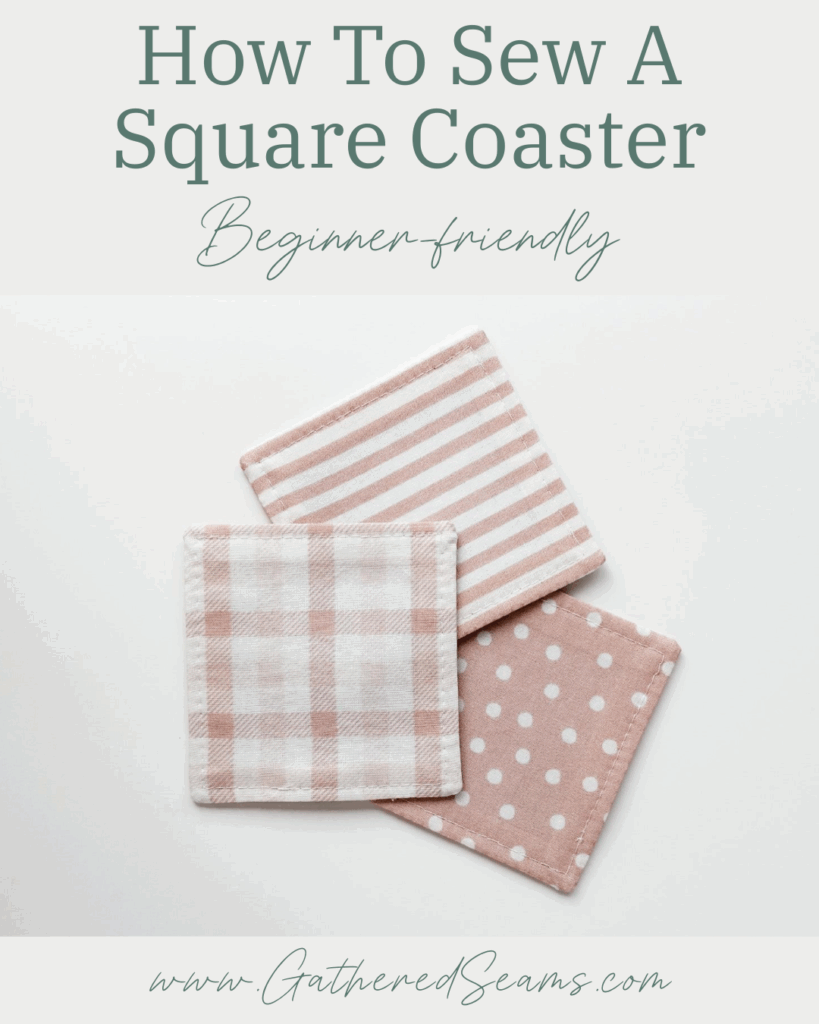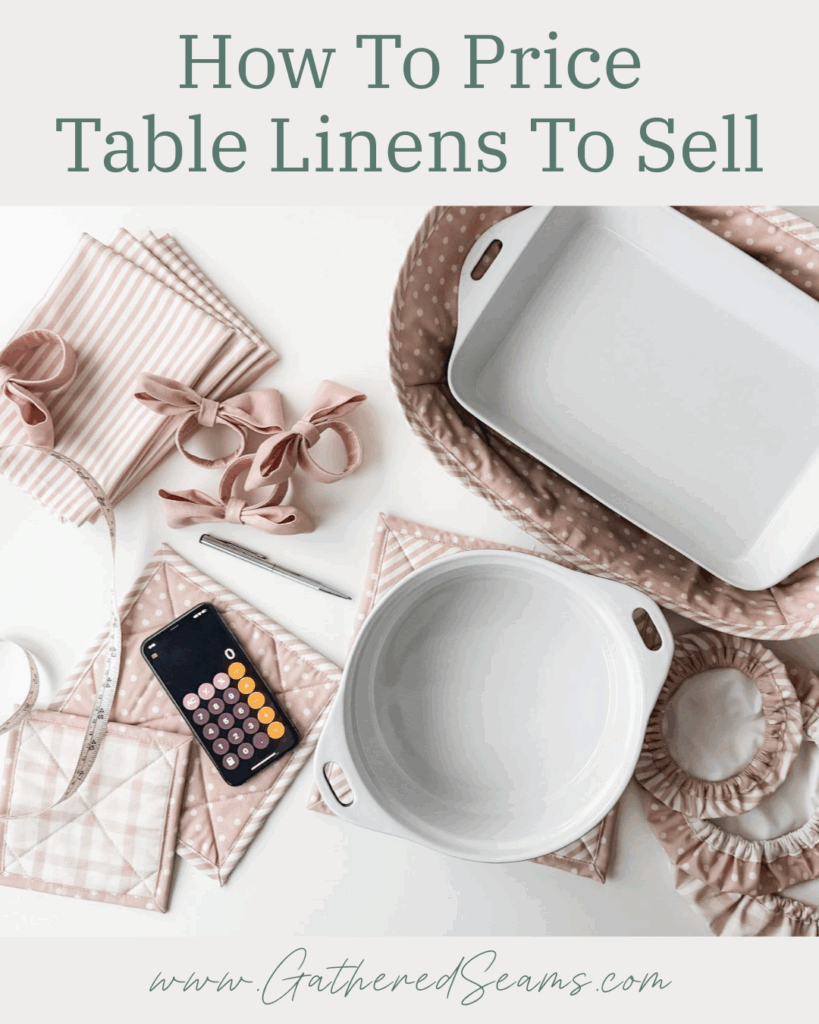How to Sew & Sell Table Linens that Stand Out

Sewing products that fall under the category of table linens are ideal for a small business because they’re:
- Beginner-friendly – most table linen items don’t require advanced sewing skills.
- Evergreen – table linens are items that are used throughout the year, making them forever in demand.
- Collection-friendly – your product line can be updated throughout the year to develop new collections for holidays (e.g. Christmas table linens) or seasons (e.g. Spring table linen collection)
- Replaceable – items such as placemats, napkins, hot pads, etc. tend to get stained with use and may need to be replaced every year or two.
Table linens can include:
- coasters
- placemats
- napkins
- napkin rings
- hot pads
- table runner/tablecloth
- food covers
- etc.
If you’ve sewn any of these items and are thinking about selling them at craft shows or on Etsy, this article will cover several things to consider to help your table linen business stand out.
Step 1 – Who are your table linens for?
Before you dive into creating, think about who you’re creating for.
Otherwise, it’s like buying a gift before you know who it’s for.
Think of your customers as gift recipients; you need to know enough about them to make table linens that are perfect for them.
That can be hard, right? Everyone has slightly different tastes.
That’s why it’s important to choose a target market and focus your business on them.
I like to choose a target market based on a common passion, interest, or lifestyle.
For example:
- Passion: cats
- A line of table linens that are cat-shaped or use cat-prints.
- Interest: modern farmhouse decor
- A line of modern farmhouse-style table linens
- Lifestyle: new parents
- A line of kid-friendly table linens (e.g. wipeable, durable)
You can even combine target markets.
- Interest + Lifestyle: new parents with a modern farmhouse-style home
- A line of kid-friendly table linens in a modern farmhouse style
The main purpose of defining a target market is to be able to identify who you’re making products for, understand enough about them to create products they’ll love, and to know where and how you can market and sell to them. For example:
-
- Which influencers do they follow on social media? Those influencers may be willing to promote your product.
- Which blogs and magazines do they read? Those magazines may feature your products/business.
- Which stores do they shop in? Those stores may carry your products.
Don’t get too hung up on the words passion, interest, and lifestyle. Simply think about:
- how people define themselves (e.g. I’m a sports fanatic, I’m a bookworm, I’m a cat lover, etc.)
- what consumes most of their time (e.g. being a mom, planning a wedding, learning about interior design trends, etc.)
- what they care deeply about (e.g. their children, the environment, how their home looks, etc.)
This can help you find a unique niche in the market.
Step 2 – Style
The next thing you want to think about is what type of style you’re going to focus on.
This may already be determined by the target market you chose (e.g. modern farmhouse style homeowners).
In general, people shop within their familiar boxes.
For example, when asked to describe the style of their home, most people will define it as:
- modern farmhouse
- cottagecore
- mid-century modern
- bohemian
- coastal
- french country
- etc.
So to create table linens that appeal to a wider audience, it’s a good idea to start with a popular style category.
Within that style category, you should develop your unique signature style.
A signature style is a key look that your business becomes known for.
And the way that’s achieved is by taking one or more design elements and repeating them in every product you offer.
For example, let’s say I’m creating table linens in a cottagecore style, which is defined by:
- fabrics – natural materials and textures (e.g. linen, cotton)
- details – feminine touches (e.g. lace, ruffles, and bows)
- prints – floral, plaid, gingham, and polkadot prints
- colors – soft muted colours
I may repeat the same 4 prints across all my products, working exclusively with organic linen.
My customers will come to know my business for quality linen fabrics and mix and match cottagecore prints.
If I wanted to strengthen my signature style, I might repeat another element, such as color, and only work with different shades of pink.

This helps create a strong presentation:
- on my website
- in my Etsy shop
- for my craft show display
- for my Instagram feed
- etc.
On the other hand, if I offered my table linens in a wide range of colours, prints, and materials, it wouldn’t look as cohesive.
Try to start with a widely known style that many people decorate their homes in and define the elements of that style.
Then think about your version of that style and the style elements you’ll repeat throughout your product line.
Step 3 – Brand
Your brand is something you should think about from the start. Branding is often thought of as plastering a logo on products. But it’s more about defining how you want your business to make people feel.
Think of your brand as a vibe or a feeling.
For example:
- Feminine
- Whimsical
- Masculine
- Sophisticated
- Youthful
- Playful
- Calm
- Luxurious
Once you define how you want people to feel, then you can think about ways to apply it to different elements of your business.
- Logo (colors, style, typography)
- Website design (colors, fonts, layout)
- Products (type of products you offer, style of products)
- Product packaging (labels, tags, boxes)
- Product photography (lighting, props, and editing filters)
- Craft show display (tablecloth, fixtures, props, signage, how you dress and talk)
- Shipments (style/color of box, sticker/tape used to close boxes, how you wrap an item inside)
- Social media posts (photos, titles, descriptions, and hashtags)
- Etc.
It doesn’t have to be complicated or expensive to build your brand. It’s simply about having a clear definition of your brand and then applying it to as many touchpoints in your business as possible.
Together, your target market, signature style, and brand will help you build a business that stands out among your competition and builds a loyal customer base.



